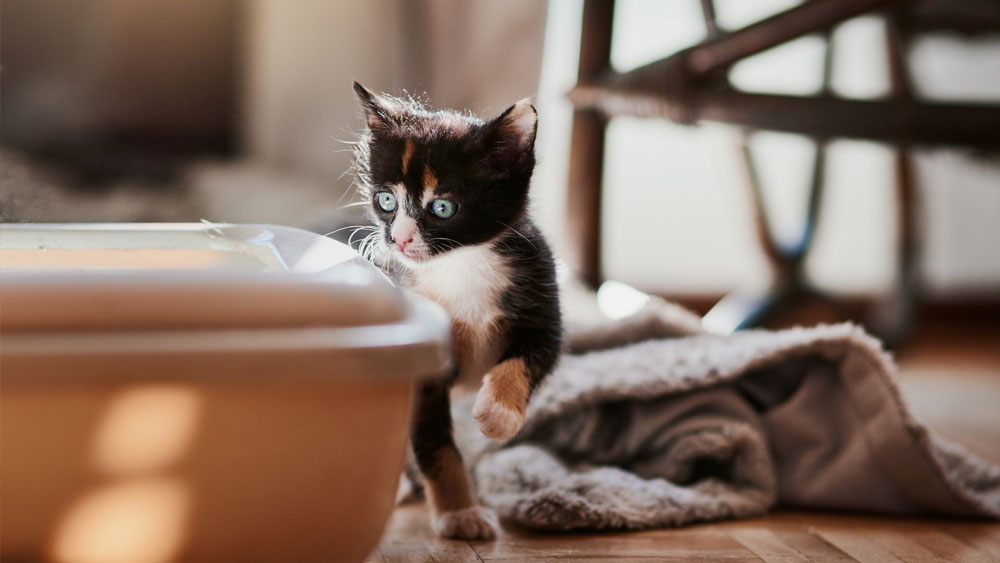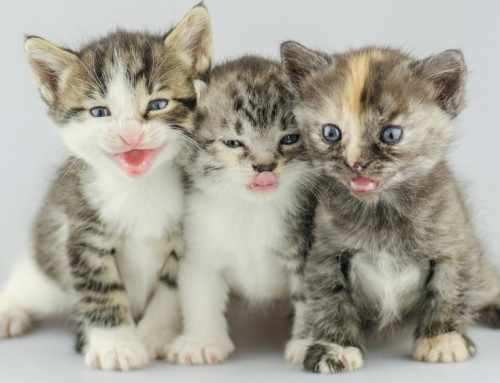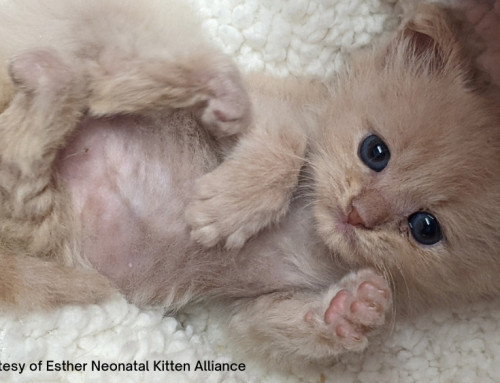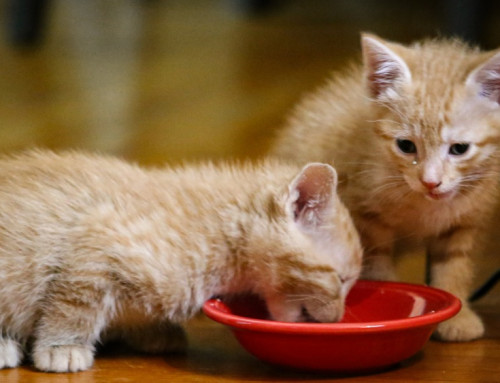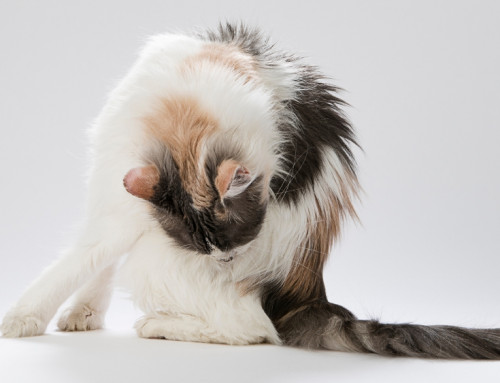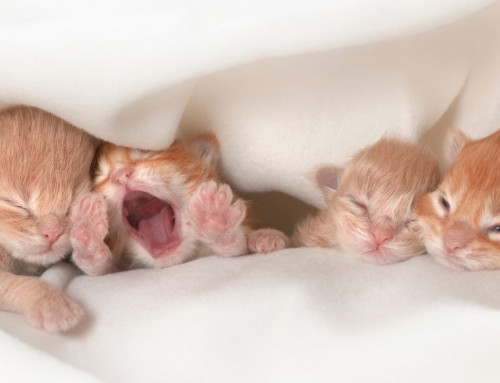Share this resource or email it to a friend!
Mom cats lick their kittens’ genital areas to stimulate kittens to pee and poop. It’s nature’s way of keeping the nest and kittens clean and not attracting predators. When there is no mom cat, fosters use a soft tissue to stimulate kittens to potty before and after each meal.
It isn’t until kittens are three weeks of age that they can potty on their own. At that time, they can be introduced to a low-sided litter box. When they first start using the litter box, it’s not uncommon for kittens to cry. It’s a new, possibly scary experience to be pooping and peeing on their own in litter!
Kittens tend to explore the world with their mouth and, if they swallow clumping litter, it can cause a serious blockage in their intestines. Therefore, clumping litter shouldn’t be used until kittens are at least 4 months old.
Cats can be very particular when it comes to what’s in their litter box, which makes choosing litter very important. Did you know that adult cats often prefer the type of litter they used as kittens?
Here are some factors to consider when choosing a litter for your kitten or cat.
- The texture of litter is important to kittens and cats. Their paws contain lots of nerve receptors, making them very sensitive to texture. Most cats prefer a soft, sandy texture. A cat who scratches in his litter to find the perfect spot to poop and then buries his deposit probably likes the texture of the litter. A cat who perches on the side of the litter box and doesn’t bury his poop probably dislikes the texture.
- The scent of litter is also important. Cats’ noses have 40 times as many odor-sensitive cells as human noses. So, while a scented litter may appeal to people, it’s usually unpopular with cats whose noses are inches away from it. Consider, too, that while scented litter may disguise the stink of a dirty box to us, it doesn’t pass a cat’s sniff test.
We all know that cats like routine, and changing litter types and even brands can cause cats to avoid the litter box. Try not to run out of your kitten’s or cat’s preferred litter or buy litter based on what’s on sale from one time to the next.
If you’re adopting a kitten, ask the animal shelter or rescue group for a baggie of the litter to take home. You can continue to use this type of litter or, if you want to change the type of litter, mix a small amount of the new litter in with the current one every day over a 3-5 day period. You can also provide additional litter boxes with different types of litter to see which type your cat prefers.
Once you’ve settled on a litter, maintain about a 2-inch level in the box by “replacing” scooped litter every few days. If using clumping litter, scoop at least twice a day, and wash the litter box with hot water and dish liquid at least monthly; if using non-clumping litter, wash the box at least weekly.
Now consider the many types of litter and their pros and cons.
- Clay litter comes in two types, clumping and non-clumping. Clumping litter is affordable, absorbs the waste and scoops easily. It’s bad for the environment, tracks easily and can be dusty. Clumping litter isn’t safe for kittens because it expands when it comes in contact with liquid and, if swallowed, the litter could cause an intestinal blockage.
- Pellet litters are made from leftover timber industry wood. They break down into sawdust when urinated on. There is pellet litter made specifically for cats; wood stove pellets can also be used as litter if it’s free of phenol and essential oils, which are toxic to cats. Always contact the manufacturer to ensure the wood stove pellets are kiln dried to remove phenol and don’t contain any additives. Pellet litter is affordable, absorbs odors well, tracks minimally, is dust-free and environmentally friendly. Special boxes for pellet litter make cleaning easy.
- Silica gel is a newer option for cat litter. It’s expensive, but controls odor well and absorbs urine, so there’s no need to scoop. Some brands change color when it’s time to change the litter, while others use color to indicate a cat’s urinary health. Silica gel doesn’t track, so the area around the litter tray stays nice and clean.
- Corn litter is made of dried corn kernels. It’s expensive, but lightweight and fully biodegradable; some varieties can be flushed down the toilet. There are concerns about aflatoxins, molds common in corn, which are toxic to cats. Most companies guarantee their products against this. Corn litter is safe for kittens.
- Paper litter is made from processed, recycled papers. It’s affordable, dust- and fragrance-free; it can be a good choice for cats with paw injuries as it’s softer than most litters. It has poor odor control and needs to be changed frequently. If you’re using shredded newspaper, make sure the ink is non-toxic.
IMPORTANT NOTES:
You should always consult your veterinarian if your kitten is having diarrhea, and for very tiny kittens, immediate action is needed. Bottle baby kittens can quickly dehydrate and even older kittens with bad diarrhea can dehydrate and decline rapidly, so your prompt actions can save their lives.
When cats are stressed by the “condition” of their litter box – they don’t like the odor, the texture, the level of cleanliness, the location – they may not use it. They may also not use it if they have a medical issue, such as an infection, urinary crystals or arthritis, which makes it painful to pee or poop or get in the litter box. Cats who are having trouble peeing may go to the litter box repeatedly, try to pee in unusual places, lick their genitals and cry in pain. Don’t assume that cats straining in the litter box are constipated. Contact your veterinarian immediately if your male cat is straining without peeing or peeing only small amounts. Male cats become more easily blocked by crystals building because their urethra is smaller than female cats. Male cats who can’t pee can die quickly or suffer irreversible organ damage when toxins build up in their bodies.

